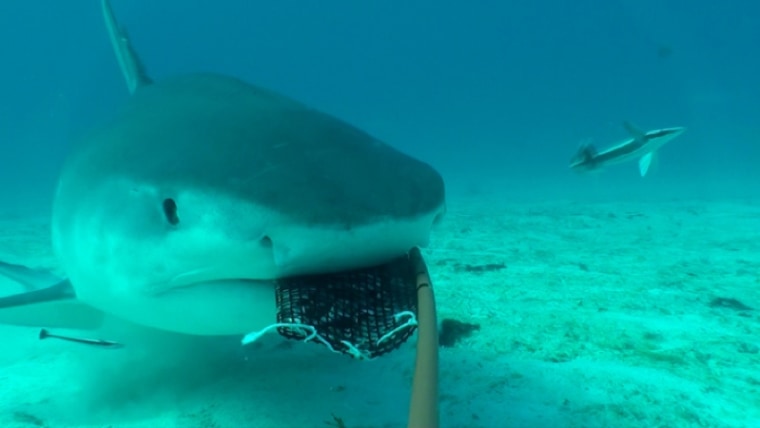Researchers from across the globe recently teamed up to accomplish what might seem like an impossible (and scary) task: counting as many of the ocean's sharks as possible.
The giant shark census, dubbed the Global FinPrint, is expected to last three years and involves surveying more than 400 reef locations around the world. Researchers will use underwater cameras on the ocean floor to capture images of sharks and other animals as they pass by, and the scientists are calling on boaters, sailors and other ocean lovers to help get this equipment into position, according to the Global FinPrint website.

An estimated 100 million sharks are killed every year, according to a study published in 2013 in the journal Marine Policy. But data collected for the new shark census could be used to help scientists and policy makers arrive at informed decisions about protecting imperiled shark populations, according to a statement from Florida International University (FIU), which is taking part in the survey. [See Photos from the Global Shark Census]
While those involved with the project don't expect to count every shark in the ocean, they do hope to get a better sense of shark numbers in certain areas of the world where statistics about these animals are scarce, according to FIU.
Specifically, scientists are counting as many sharks as possible in the Indo-Pacific Ocean (which includes parts of the Indian and Pacific Oceans), the tropical western Atlantic Ocean (from Bermuda on south to Brazil), and the southern and eastern Africa and Indian Ocean islands.
Related: Study Says Risk of Shark Attack in California Has Plummeted
These areas have significant data gaps about shark populations, FIU said. With more reliable numbers in hand, scientists will have a better idea of how to organize conversation efforts for the animals, Dune Ives, senior director of philanthropy at Vulcan Inc. (one of the organizations behind this massive oceanic census), said in a statement.
The cameras that researchers use to capture sharks on video are known as "baited remote underwater video cameras," or BRUVs. Each camera has a small, fish-laden trap attached to its front end that encourages passing sharks to come in for a close-up. These up-close-and-personal shots will be used alongside thousands of hours of existing underwater video footage to create a single dataset, the first-ever global shark census, according to FIU.
Results from the shark census will be available in 2018 and will be accessible to scientists, policy makers and other groups responsible for making decisions about conservation policies, the researchers said.
This is an abbreviated version of a report from Live Science. Read the full report. Follow Elizabeth Palermo @techEpalermo. Follow Live Science @livescience, Facebook & Google+.